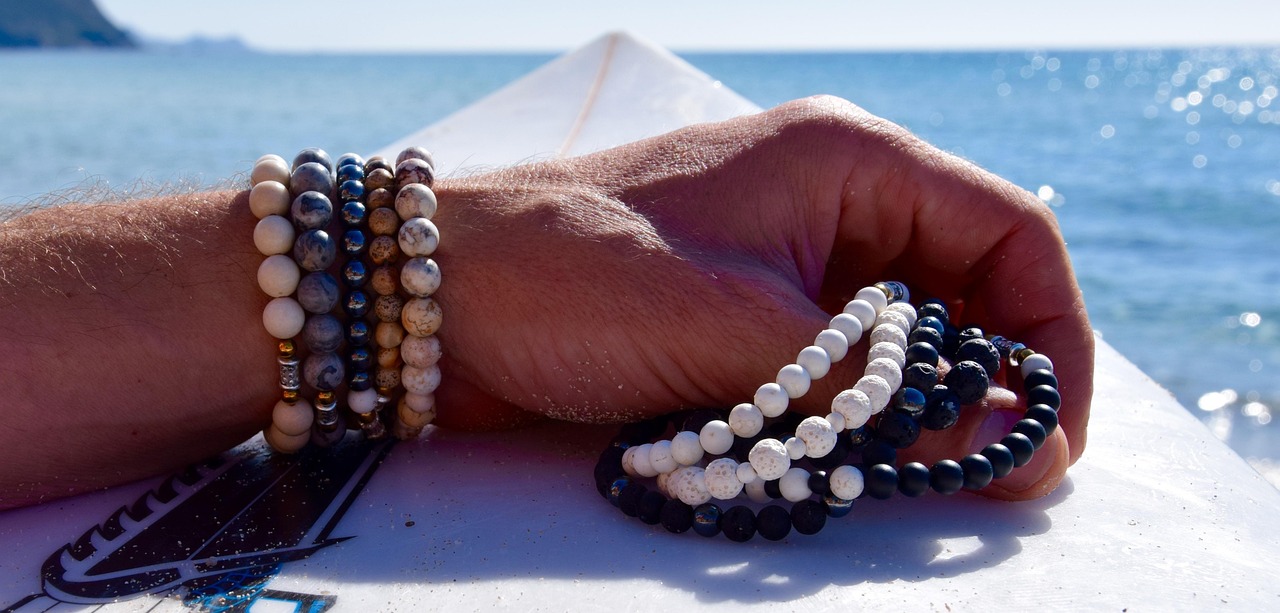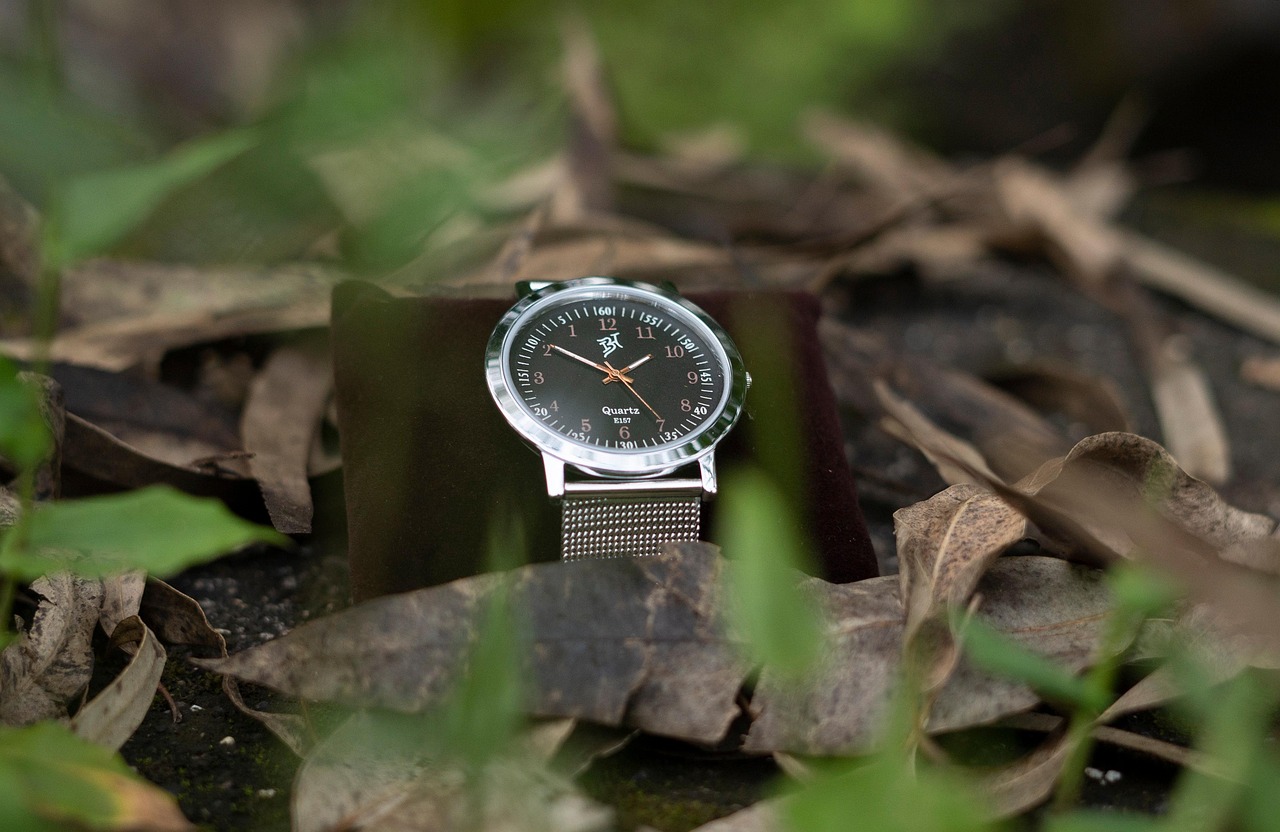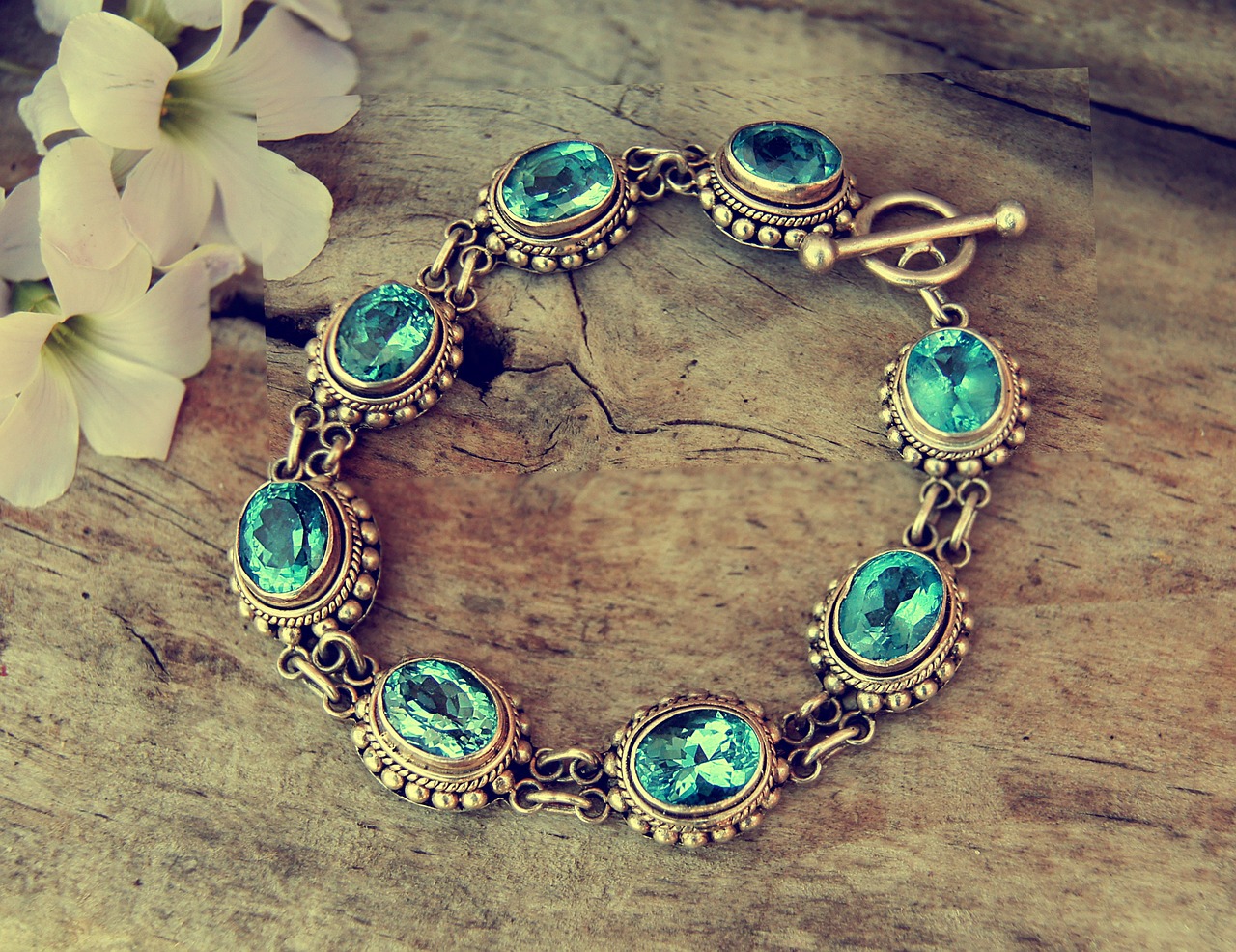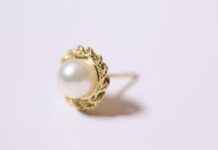This article delves into the intricate world of luxury jewelry craftsmanship, revealing the techniques, materials, and artistry that elevate fine jewelry to a symbol of elegance and status. Luxury jewelry is not merely about ornamentation; it embodies a rich history of artistry and meticulous craftsmanship that has been refined over centuries.
The Art of Jewelry Design
Jewelry design is a meticulous process that marries creativity with technical skill. Designers often start with a concept, sketching their ideas before moving to the creation phase. Each piece is tailored to reflect the designer’s vision and the wearer’s personality, making it a unique form of self-expression.
Selecting High-Quality Materials
The choice of materials is crucial in luxury jewelry. Precious metals and gemstones significantly influence the overall quality and value of the piece.
- Precious Metals: Understanding the properties of gold, platinum, and silver is essential for appreciating their value.
- Gold: Known for its malleability and luster, gold remains a timeless classic.
- Platinum: This rare metal offers unmatched durability and a unique sheen.
Gemstones: The Heart of Luxury Jewelry
Gemstones are often the focal point of luxury pieces. Their quality, cut, and color significantly impact design and value, making them critical in the crafting process.
The Craftsmanship Process
Craftsmanship in luxury jewelry involves a series of meticulous steps, from initial sketches to final polishing. Each stage is crucial in ensuring the piece is crafted to perfection.
The Role of Technology in Jewelry Craftsmanship
Technological advancements have transformed jewelry making, introducing new tools and methods that enhance precision and creativity.
- 3D Printing: Revolutionizes prototype creation, allowing for complex designs.
- CAD Software: Enables precise visualization and modification of designs.
The Importance of Ethical Sourcing
Ethical sourcing is paramount in luxury jewelry, ensuring responsible procurement of gemstones and metals.
- Conflict-Free Diamonds: Reflects growing consumer awareness regarding ethical implications.
- Sustainable Materials: Appeals to consumers valuing ethical considerations.
The Future of Luxury Jewelry Craftsmanship
As trends evolve, the future of luxury jewelry craftsmanship will likely blend traditional techniques with innovative approaches, catering to a new generation of consumers.
In conclusion, the world of luxury jewelry craftsmanship is a fascinating blend of art, science, and ethics. As we move forward, the emphasis on quality, sustainability, and individual expression will continue to shape this exquisite industry.

The Art of Jewelry Design
is a fascinating realm where imagination meets precision. This intricate process involves not just the creation of beautiful adornments but also the embodiment of a story, emotion, or personal expression. Each piece of jewelry serves as a canvas for the designer’s creativity, showcasing their unique vision while also resonating with the personality of the wearer.
At its core, jewelry design is a meticulous process that demands a harmonious blend of artistic flair and technical prowess. Designers often begin with a simple idea or inspiration, which they then translate into sketches. These initial designs are crucial as they set the foundation for the entire creation process. The transition from concept to reality involves various stages, including material selection, prototyping, and final adjustments.
- Creativity: The designer’s imagination is vital in creating innovative and appealing designs that stand out in the market.
- Technical Skill: Mastery of techniques such as soldering, stone setting, and polishing is essential for bringing designs to life.
- Attention to Detail: Every element, from the choice of gemstones to the finish of the metal, must be meticulously considered to ensure quality.
The choice of materials plays a significant role in the design process. Precious metals like gold and platinum, along with exquisite gemstones, not only enhance the aesthetic appeal but also contribute to the piece’s overall value. A designer must be knowledgeable about these materials to make informed decisions that align with their vision.
Ultimately, the art of jewelry design is about creating pieces that are not only visually stunning but also deeply personal. Each item tells a story, reflecting the individuality of the wearer while showcasing the designer’s artistic journey. This beautiful interplay between creativity and craftsmanship is what makes jewelry design a truly remarkable art form.

Selecting High-Quality Materials
The selection of materials in luxury jewelry is not merely a choice; it is a fundamental aspect that defines the essence and value of each piece. The combination of precious metals and gemstones greatly influences not only the aesthetics but also the longevity and prestige of the jewelry.
- Precious Metals: The backbone of luxury jewelry, precious metals such as gold, platinum, and silver provide both beauty and durability. Each metal has unique properties that enhance the overall design and appeal.
- Gold: Renowned for its malleability and luster, gold is available in various karats, with higher karat gold being more valuable. Its resistance to tarnish ensures that pieces remain timeless.
- Platinum: As one of the rarest metals, platinum is highly sought after for its durability and weight, making it an excellent choice for settings that require strength.
- Silver: While more affordable, silver must be alloyed with other metals to enhance its strength, leading to variations like sterling silver that are popular in both luxury and everyday jewelry.
Gemstones: The choice of gemstones is equally critical. The quality, cut, and color of gemstones significantly impact the jewelry’s overall value. Gemstones must be sourced ethically and possess the desired characteristics to ensure that they enhance the beauty of the piece.
- Quality: High-quality gemstones exhibit clarity, brilliance, and the absence of inclusions. These factors are essential in determining their market value.
- Cut: The way a gemstone is cut affects its sparkle and overall appearance. A well-cut stone will reflect light beautifully, enhancing its allure.
- Color: Color is a significant factor in gemstone valuation. For instance, deep blue sapphires or vivid red rubies are often more sought after than lighter shades.
In conclusion, the careful selection of high-quality materials in luxury jewelry is essential for creating pieces that not only stand the test of time but also resonate with elegance and sophistication. The interplay of precious metals and exquisite gemstones forms the foundation of luxury jewelry, making it a true investment.
<h3 Precious Metals: Gold, Platinum, and Silver
Precious metals such as gold, platinum, and silver have captivated humanity for centuries, not only due to their intrinsic value but also because of their unique properties that enhance their allure in luxury jewelry. Understanding these metals is crucial for both consumers and collectors who appreciate the craftsmanship and aesthetic appeal of fine jewelry.
Gold is often considered the quintessential precious metal. Its malleability allows it to be shaped into intricate designs, while its luster provides a radiant finish that is highly sought after. Gold is resistant to tarnish, making it an ideal choice for jewelry that lasts a lifetime. Available in various purities, measured in karats, the most common types used in jewelry are 14K, 18K, and 24K, with 24K being the purest form.
Platinum, on the other hand, is known for its rarity and durability. This metal is denser than gold, giving it a unique weight that many wearers find appealing. Its natural white sheen complements a wide range of gemstones, enhancing their color and brilliance. Additionally, platinum is hypoallergenic, making it an excellent choice for those with sensitive skin. Its resistance to tarnish and corrosion ensures that platinum jewelry remains stunning for generations.
Silver is another popular precious metal used in jewelry, valued for its affordability and versatility. Sterling silver, which is 92.5% pure silver, is commonly used in jewelry making. While silver can tarnish over time, regular cleaning can maintain its shine. Its reflective quality makes it an excellent choice for intricate designs and detailed craftsmanship.
In summary, the properties and characteristics of gold, platinum, and silver play a vital role in the luxury jewelry market. Understanding these metals not only enhances appreciation for their value but also informs consumers about their choices in jewelry that reflects their personal style and status.
<h4 Gold: The Timeless Classic
Gold has long been revered as a timeless classic in the world of jewelry making. Its unique properties such as malleability, luster, and resistance to tarnish have made it a favored choice among artisans and designers alike. This precious metal not only holds intrinsic value but also carries a cultural significance that has endured through the ages.
One of the most remarkable features of gold is its malleability. This property allows jewelers to easily shape and mold gold into intricate designs, making it ideal for both delicate and bold pieces. Whether it’s a finely detailed bracelet or a statement ring, gold can be crafted to meet diverse aesthetic preferences.
In addition to its malleability, gold is known for its stunning luster. The shiny surface of gold reflects light beautifully, adding a sense of elegance and luxury to any jewelry piece. This radiant quality makes gold an excellent choice for high-end jewelry that aims to capture attention and convey sophistication.
Moreover, gold’s resistance to tarnish ensures that pieces maintain their beauty over time. Unlike other metals that may corrode or discolor, gold jewelry can be worn daily without fear of losing its shine. This durability is particularly appealing to consumers looking for long-lasting investments in their jewelry collections.
Gold also comes in various purity levels, commonly measured in karats. The higher the karat, the purer the gold, which often translates to a more luxurious feel. Many jewelers offer options in 14k, 18k, and 24k gold, allowing customers to choose according to their preferences and budget.
In conclusion, gold’s unique characteristics make it an enduring favorite in the jewelry industry. Its malleability, luster, and resistance to tarnish not only enhance the beauty of jewelry but also ensure its longevity. As trends in jewelry design evolve, gold remains a staple that continues to symbolize luxury and elegance.
<h4 Platinum: The Ultimate Luxury Metal
Platinum is often regarded as the ultimate luxury metal, a distinction earned through its remarkable characteristics that set it apart from other precious metals. Known for its exceptional rarity, platinum is significantly less abundant than gold or silver, making it a coveted choice for those seeking exclusive and high-end jewelry pieces.
One of the most appealing features of platinum is its durability. Unlike gold, which can be prone to scratches and dents, platinum possesses a natural strength that allows it to withstand the test of time. This durability not only ensures that jewelry remains beautiful for years but also makes it an ideal choice for everyday wear, particularly for engagement rings and wedding bands.
In addition to its strength, platinum boasts a unique weight and density that gives it a luxurious feel. When worn, platinum jewelry has a substantial presence that many enthusiasts find appealing. This weightiness contributes to the perception of quality and value, making it a preferred option for high-end designs.
Moreover, platinum’s sheen is truly distinctive. Its natural white color enhances the brilliance of gemstones, making it an excellent setting for diamonds and other precious stones. The metal’s reflective qualities allow for a stunning display of light, further elevating the beauty of the jewelry.
Another significant aspect of platinum is its hypoallergenic properties. For individuals with sensitive skin, platinum is an excellent choice as it is less likely to cause allergic reactions compared to other metals that contain nickel or other irritants. This makes platinum jewelry not only a symbol of luxury but also a practical option for many consumers.
In conclusion, platinum stands out as the ultimate luxury metal due to its rarity, durability, weight, sheen, and hypoallergenic qualities. These features make it a highly sought-after material in the world of fine jewelry, appealing to those who appreciate both elegance and resilience in their adornments.
<h3 Gemstones: The Heart of Luxury Jewelry
Gemstones: The Heart of Luxury Jewelry
In the realm of luxury jewelry, gemstones serve as the centerpiece that captivates the eye and elevates the overall aesthetic appeal of each piece. The significance of gemstones extends beyond mere decoration; they embody a rich history, cultural symbolism, and emotional value that resonates with wearers around the world.
When it comes to luxury jewelry, the quality of gemstones is paramount. Factors such as clarity, cut, color, and carat weight contribute to the gemstone’s overall allure and market value. High-quality gemstones are often sourced from renowned locations, adding to their prestige. For instance, diamonds from the Kimberley region or emeralds from Colombia are highly coveted due to their superior quality and rarity.
| Gemstone | Key Characteristics | Value Factors |
|---|---|---|
| Diamond | Exceptional hardness, brilliance | Cut, clarity, carat weight, color |
| Emerald | Rich green color, inclusions | Color intensity, clarity, origin |
| Sapphire | Variety of colors, durability | Color, cut, origin |
The cut of a gemstone is equally crucial, as it determines how light interacts with the stone, affecting its brilliance and sparkle. A well-cut gemstone can enhance the visual appeal of a piece, making it more desirable to collectors and enthusiasts alike. Additionally, the color of a gemstone can evoke different emotions and meanings, further enhancing its value and significance.
Ultimately, the combination of these factors—quality, cut, and color—plays a vital role in shaping the overall design and value of luxury jewelry. As consumers become more discerning, understanding these elements can empower them to make informed choices, ensuring that their investment in luxury jewelry is both meaningful and valuable.
<h2 The Craftsmanship Process
The Craftsmanship Process in luxury jewelry is a fascinating journey that transforms raw materials into exquisite pieces of art. This intricate process encompasses a variety of stages, each requiring a unique set of skills and attention to detail. From the initial concept to the final touches, every step is crucial in creating jewelry that not only dazzles but also tells a story.
The journey begins with design sketching, where artisans put their creative ideas onto paper. This stage is essential as it lays the foundation for the piece, allowing designers to visualize proportions, styles, and the overall aesthetic. Once the design is finalized, the next step is material selection, where high-quality metals and gemstones are chosen. The choice of materials greatly influences the piece’s value and durability.
Following material selection, the crafting process begins. This includes several techniques such as:
- Wax carving: A method where a model is sculpted in wax, which is later cast in metal.
- Metal forming: Involves shaping metal through techniques like forging and bending.
- Stone setting: The meticulous process of securely placing gemstones into the design, ensuring they are both beautiful and stable.
Each of these techniques requires a high level of skill and precision. For instance, stone setting is particularly challenging, as it demands not only technical skill but also an artistic eye to enhance the overall appearance of the jewelry.
Once the piece is assembled, it undergoes a series of finishing touches, including polishing and quality control. This final stage ensures that every piece meets the highest standards of luxury and craftsmanship. The result is a stunning piece of jewelry, ready to be cherished and admired.
In conclusion, the craftsmanship process in luxury jewelry is not merely about creating beautiful objects; it is a testament to the skill, artistry, and dedication of the artisans involved. Each piece tells a unique story, reflecting the passion and commitment to excellence that defines the world of luxury jewelry.
<h3 Handcrafted vs. Machine-Made Jewelry
The debate between handcrafted and machine-made jewelry is a significant topic in the world of luxury accessories. Each type has its own unique qualities and appeals to different segments of consumers. Understanding these differences can help buyers make informed decisions based on their personal values and preferences.
Handcrafted jewelry is often celebrated for its artisanal skills and the individual attention each piece receives during its creation. Artisans invest time and effort into every detail, ensuring that each item is not only a piece of jewelry but a work of art. The imperfections that may arise during the crafting process are often seen as a testament to the human touch, adding character and uniqueness to each piece. This level of craftsmanship can create a deeper emotional connection for the wearer, as they possess something truly one-of-a-kind.
On the other hand, machine-made jewelry is produced using advanced technology, allowing for mass production and consistency in design. This method can significantly lower costs and make jewelry more accessible to a broader audience. Many consumers appreciate the precision and uniformity that machine-made pieces offer, especially in styles that require exact replicas. However, some argue that this method lacks the soul and individuality that handcrafted jewelry embodies.
Ultimately, the choice between handcrafted and machine-made jewelry comes down to personal preference. While some may prioritize the unique qualities and artistry of handcrafted pieces, others may value the affordability and consistency of machine-made options. Understanding these aspects can greatly enhance the jewelry buying experience, allowing consumers to choose pieces that resonate with their values and lifestyle.
| Aspect | Handcrafted Jewelry | Machine-Made Jewelry |
|---|---|---|
| Production | Artisanal, individual craftsmanship | Mass production using technology |
| Uniqueness | One-of-a-kind pieces | Uniform designs |
| Cost | Generally higher | More affordable |
| Connection | Emotional and personal | Less personal connection |
<h3 Techniques in Jewelry Making
The Secrets Behind Luxury Jewelry Craftsmanship
This article explores the intricate world of luxury jewelry craftsmanship, uncovering the techniques, materials, and artistry that elevate fine jewelry to a symbol of elegance and status.
Techniques in Jewelry Making
In the realm of luxury jewelry, craftsmanship is an art that involves a variety of specialized techniques, each contributing to the final piece’s intricacy and allure. Among these techniques, casting, engraving, and stone setting stand out as essential methods that transform raw materials into exquisite creations.
- Casting: This technique involves pouring molten metal into a mold to create a desired shape. It allows for intricate designs that would be difficult to achieve through traditional methods. The precision of casting results in pieces that are both beautiful and structurally sound.
- Engraving: Engraving adds a personal touch to jewelry, allowing artisans to inscribe designs or messages onto the surface of the metal. This technique enhances the visual appeal and can also serve to commemorate special occasions.
- Stone Setting: The art of stone setting is crucial in luxury jewelry. It involves securely placing gemstones into the design, ensuring they are showcased beautifully. Different setting styles, such as prong, bezel, and pavé, can dramatically influence the overall look and feel of the piece.
Each of these techniques not only requires a high level of skill but also a deep understanding of materials. The combination of these methods results in jewelry that is not only aesthetically pleasing but also rich in meaning and craftsmanship.
As technology advances, new techniques are emerging, providing jewelers with innovative ways to enhance their artistry. However, the traditional methods remain revered for their timeless elegance and the personal touch they bring to each piece.
In conclusion, the intricate techniques involved in luxury jewelry making play a vital role in the creation of stunning pieces that capture the essence of beauty and craftsmanship. Understanding these methods allows consumers to appreciate the artistry behind their jewelry, making each piece not just an accessory, but a work of art.
<h2 The Role of Technology in Jewelry Craftsmanship
The Role of Technology in Jewelry Craftsmanship has become increasingly significant in recent years, as advancements in technology have dramatically changed the landscape of jewelry design and production. These innovations not only enhance the precision of the craftsmanship but also allow for greater creativity and exploration in the design process.
One of the most notable advancements is the introduction of 3D printing. This technology enables designers to create intricate prototypes with remarkable accuracy. By utilizing 3D printing, jewelers can experiment with complex shapes and forms that were once deemed impossible with traditional methods. This not only saves time but also significantly reduces material waste, making the process more efficient and environmentally friendly.
Another crucial tool in modern jewelry making is Computer-Aided Design (CAD) software. CAD allows designers to visualize their creations in a digital format, providing the ability to modify and refine designs with ease. This technology facilitates a more streamlined workflow, as changes can be made quickly without the need for physical prototypes. The precision offered by CAD ensures that the final product closely aligns with the designer’s vision, enhancing overall quality.
Moreover, technological advancements have also led to improved techniques in stone setting and engraving. Automated machines can now perform these tasks with exceptional accuracy, ensuring that each piece of jewelry meets high standards of craftsmanship. However, the balance between technology and traditional handcrafting techniques remains vital, as many consumers still value the artisanal touch and uniqueness that handcrafted jewelry provides.
In conclusion, the integration of technology in jewelry craftsmanship has opened new avenues for creativity and precision. As the industry continues to evolve, the collaboration between innovative tools and traditional skills will likely define the future of luxury jewelry, allowing for breathtaking designs that resonate with modern consumers.
<h3 3D Printing in Jewelry Design
3D printing has fundamentally transformed the landscape of jewelry design, offering designers unprecedented capabilities to create intricate and elaborate prototypes. This innovative technology allows for the production of complex shapes and designs that were once considered impractical or impossible using traditional methods.
One of the most significant advantages of 3D printing in jewelry design is the ability to rapidly prototype. Designers can quickly generate multiple iterations of a piece, experimenting with various styles, sizes, and materials without the substantial time and cost typically associated with traditional crafting methods. This rapid prototyping not only accelerates the design process but also enhances creativity, as designers can visualize their concepts in real-time.
Moreover, 3D printing enables the creation of highly detailed and intricate designs that push the boundaries of traditional jewelry making. Complex geometries, delicate filigree work, and customized features can be achieved with precision, allowing for a level of personalization that resonates with modern consumers. This capability is particularly appealing in the luxury market, where uniqueness and exclusivity are paramount.
Another crucial aspect is the use of various materials in 3D printing. Designers can experiment with different metals, resins, and even sustainable materials, catering to diverse consumer preferences and ethical considerations. This flexibility not only enhances the aesthetic appeal of the jewelry but also aligns with the growing demand for environmentally friendly practices in the industry.
In conclusion, 3D printing represents a significant leap forward in jewelry design, merging technology with artistry. By facilitating rapid prototyping, enabling intricate designs, and offering material diversity, it empowers designers to create exceptional pieces that meet the evolving tastes and values of today’s consumers. As this technology continues to advance, we can anticipate even more innovative and personalized jewelry creations in the future.
<h3 CAD Software: Designing the Future
The Secrets Behind Luxury Jewelry CraftsmanshipCAD Software: Designing the Future
In the realm of luxury jewelry design, Computer-Aided Design (CAD) software has emerged as a revolutionary tool that reshapes the creative landscape. This sophisticated technology allows jewelers to create intricate designs with unparalleled precision, significantly enhancing both the creative process and the final product’s quality.
One of the primary advantages of CAD software is its ability to visualize designs in 3D. Jewelers can manipulate shapes, colors, and textures in a virtual environment, enabling them to experiment freely without the constraints of traditional methods. This flexibility not only fosters creativity but also reduces the time spent on revisions and modifications, making the design process more efficient.
Moreover, CAD software facilitates collaboration among designers, clients, and manufacturers. By sharing digital prototypes, jewelers can gather feedback early in the design phase, ensuring that the final piece aligns with the client’s vision. This collaborative approach minimizes misunderstandings and enhances customer satisfaction.
Another significant benefit of CAD technology is its role in ensuring precision and accuracy. The software allows for meticulous detailing, which is crucial in luxury jewelry where even the slightest imperfection can detract from the overall beauty of a piece. This level of detail is particularly important when setting gemstones, as it ensures that each stone is placed perfectly, maximizing its brilliance and appeal.
Furthermore, CAD software supports the integration of 3D printing, enabling designers to create prototypes that can be physically tested before final production. This innovative approach not only saves time but also reduces material waste, contributing to a more sustainable jewelry-making process.
In conclusion, CAD software is not merely a tool; it is a transformative force in the jewelry industry. By enhancing creativity, precision, and collaboration, it paves the way for the future of luxury jewelry design, where artistry and technology coexist harmoniously.
<h2 The Importance of Ethical Sourcing
The Importance of Ethical Sourcing in the luxury jewelry industry is gaining significant traction as consumers become more conscious of their purchasing decisions. Ethical sourcing refers to the practice of obtaining materials in a manner that is responsible, sustainable, and respectful of human rights. This approach not only enhances the reputation of luxury brands but also ensures that the beauty of jewelry is not marred by unethical practices.
One of the primary concerns in the jewelry sector is the origin of gemstones and metals. Many consumers are now seeking conflict-free diamonds, which are sourced from regions free of violence and exploitation. The rise of organizations that certify diamonds as conflict-free has made it easier for consumers to make informed choices. Additionally, the implementation of fair trade practices ensures that miners receive fair wages and work in safe conditions, promoting a more equitable distribution of wealth.
Moreover, the use of sustainable materials is becoming increasingly prevalent. This includes recycled metals and ethically sourced gemstones that minimize environmental impact. By choosing sustainable options, luxury jewelry brands not only contribute to environmental conservation but also cater to a growing demographic of eco-conscious consumers. This shift towards sustainability is not just a trend; it represents a fundamental change in how jewelry is perceived and valued.
In conclusion, the importance of ethical sourcing in luxury jewelry cannot be overstated. As consumers demand more transparency and responsibility from brands, the industry must adapt to these expectations. By prioritizing ethical practices, luxury jewelry can maintain its allure while also contributing positively to society and the environment.
<h3 Conflict-Free Diamonds and Fair Trade Practices
The jewelry industry has witnessed a significant shift in consumer priorities, particularly regarding the ethical implications of sourcing materials. The growing demand for conflict-free diamonds and fair trade practices is a clear reflection of this change, as consumers become increasingly aware of the impact their purchases have on global communities and the environment.
Conflict-free diamonds are those that are sourced from mines that adhere to ethical practices, ensuring that the production process does not fund violence or human rights abuses. This awareness has led to a rise in certifications and initiatives, such as the Kimberley Process, which aims to prevent the trade of conflict diamonds. As a result, consumers are now more inclined to seek out diamonds that are certified as conflict-free, understanding that their choices can contribute to a more ethical jewelry market.
Moreover, fair trade practices extend beyond diamonds to include all aspects of jewelry production. These practices ensure that artisans and workers receive fair wages and work in safe conditions, promoting social and economic development in their communities. The emphasis on fair trade has encouraged brands to adopt transparent supply chains, allowing consumers to trace the origins of their jewelry and make informed choices.
As a result of this growing consciousness, many luxury jewelry brands are now prioritizing ethical sourcing in their business models. They are not only appealing to a market that values sustainability but are also setting new standards for the industry. By choosing conflict-free and fair trade options, consumers are actively participating in a movement that advocates for justice and equity in jewelry production.
In conclusion, the demand for conflict-free diamonds and fair trade practices signifies a vital shift towards ethical consumerism in the jewelry industry. As awareness continues to grow, it is essential for both consumers and brands to engage with these principles, ensuring that the beauty of jewelry does not come at the cost of human rights or environmental sustainability.
<h3 Sustainable Materials in Jewelry Making
In recent years, the luxury jewelry industry has witnessed a significant shift towards sustainability. This change is not merely a trend; it reflects a broader understanding of the environmental and ethical implications of material sourcing. By opting for sustainable materials, jewelry makers are not only contributing to the health of our planet but also resonating with a growing demographic of consumers who prioritize ethical considerations in their purchasing decisions.
The use of sustainable materials in jewelry making encompasses a range of practices, including the sourcing of recycled metals and ethically mined gemstones. These practices help reduce the environmental impact associated with traditional mining and processing methods, which often result in significant ecological damage. For instance, recycled gold and silver can be repurposed into stunning jewelry pieces without the need for new mining operations, thus preserving natural resources.
Moreover, consumers today are more informed than ever. They actively seek out brands that align with their values, making it essential for jewelry designers to showcase their commitment to sustainability. This shift in consumer behavior is evident in the increasing demand for conflict-free diamonds and gemstones that are sourced through fair trade practices. As a result, many luxury brands are now transparent about their sourcing processes, providing customers with the peace of mind that their purchases are not contributing to environmental degradation or human rights violations.
Additionally, the aesthetic appeal of sustainable jewelry is undeniable. Designers are creatively utilizing materials such as lab-grown diamonds and ethically sourced gemstones, which not only offer beauty and brilliance but also tell a story of responsibility and care for the Earth. This narrative adds value to the jewelry, making it more than just an accessory; it becomes a statement of personal and social ethics.
In conclusion, the integration of sustainable materials in jewelry making is a crucial step towards a more ethical and environmentally friendly industry. As consumers continue to prioritize sustainability in their purchasing choices, the jewelry market will likely evolve, embracing practices that honor both artistry and responsibility.
<h2 The Future of Luxury Jewelry Craftsmanship
The world of luxury jewelry craftsmanship is on the brink of a remarkable transformation. As we look to the future, it is evident that the fusion of traditional craftsmanship and innovative techniques will define the next era of luxury jewelry. This evolution is not merely a trend but a response to the changing preferences of a new generation of consumers who value both heritage and modernity.
One of the most significant shifts is the growing demand for personalization. Today’s consumers seek unique pieces that resonate with their individual stories and experiences. This has led to an increase in bespoke jewelry services, where artisans collaborate closely with clients to create one-of-a-kind designs. The ability to customize not only enhances the emotional value of the jewelry but also reflects a broader trend toward self-expression.
Moreover, the integration of technology into jewelry making is revolutionizing the industry. Techniques such as 3D printing and Computer-Aided Design (CAD) allow for intricate designs that were once unimaginable. These technologies enable jewelers to experiment with shapes and structures, pushing the boundaries of creativity while maintaining the highest standards of craftsmanship.
In addition, the emphasis on sustainability and ethical sourcing is becoming increasingly important. Consumers are now more aware of the origins of the materials used in their jewelry. As a result, brands are focusing on using conflict-free gemstones and recycled metals, aligning their practices with the values of their customers.
As we move forward, the future of luxury jewelry craftsmanship will likely be characterized by this harmonious blend of tradition and innovation. Artisans will continue to honor the age-old techniques that define luxury while embracing new methodologies that cater to the evolving tastes and values of consumers. This dynamic interplay will ensure that luxury jewelry remains not only a symbol of elegance and status but also a reflection of personal identity and ethical responsibility.
<h3 Emerging Trends in Jewelry Design
In the ever-evolving world of luxury jewelry, emerging trends are paving the way for a new era of creativity and consumer engagement. Among these trends, personalization and customization stand out as significant forces reshaping the market. These concepts not only cater to the growing demand for unique pieces but also allow consumers to express their individuality in ways that were previously unimaginable.
Today, consumers are no longer satisfied with off-the-shelf jewelry. They seek pieces that tell their personal stories, reflect their values, and showcase their unique styles. This shift has led to an increase in bespoke jewelry services, where artisans work closely with clients to create one-of-a-kind pieces. The process often involves consultations to understand the client’s preferences, lifestyle, and emotional connections, ensuring that the final product is a true reflection of the wearer.
Furthermore, technology plays a crucial role in facilitating this trend. With advancements such as 3D printing and CAD software, jewelers can now design intricate and personalized pieces with incredible precision. This not only enhances the creative possibilities but also allows for quicker turnaround times, making bespoke jewelry more accessible to a wider audience.
The impact of social media cannot be overlooked in this context. Platforms like Instagram and Pinterest have become vital for showcasing unique designs and connecting with potential customers. Jewelry brands leverage these platforms to highlight their customization options and share stories behind their creations, further enticing consumers to seek personalized pieces.
In conclusion, the luxury jewelry market is undergoing a transformation driven by the desire for personalization and customization. As consumers increasingly seek to express their individuality through unique pieces, the industry is responding with innovative approaches that blend artistry, technology, and personal connection. This trend not only enriches the consumer experience but also redefines the essence of luxury in jewelry.
<h3 The Impact of Social Media on Jewelry Brands
The Impact of Social Media on Jewelry Brands
In today’s digital age, social media platforms have emerged as essential marketing tools for jewelry brands, fundamentally transforming the way they connect with consumers. These platforms not only facilitate direct communication but also serve as powerful channels for brand storytelling and engagement.
One of the most significant impacts of social media is its ability to influence consumer choices. Brands can showcase their latest collections, share behind-the-scenes content, and highlight the craftsmanship involved in creating their pieces. This transparency builds trust and fosters a deeper emotional connection with potential buyers.
- Visual Appeal: Platforms like Instagram and Pinterest are inherently visual, making them ideal for showcasing the intricate details and beauty of luxury jewelry. High-quality images and videos can captivate audiences and inspire purchases.
- Influencer Collaborations: Many jewelry brands are partnering with social media influencers to reach a wider audience. These collaborations can enhance brand visibility and credibility, as influencers often have dedicated followers who trust their recommendations.
- Consumer Engagement: Social media allows brands to interact directly with their customers. This two-way communication can provide valuable feedback, allowing brands to adjust their offerings based on consumer preferences.
Moreover, social media plays a crucial role in shaping trends within the luxury jewelry sector. The rapid sharing of content enables new styles and designs to gain popularity almost overnight. Jewelry brands that effectively leverage these trends can position themselves as industry leaders, staying ahead of competitors.
In conclusion, the impact of social media on jewelry brands is profound and multifaceted. By harnessing the power of these platforms, brands can not only influence consumer choices but also establish a strong market presence, ensuring their relevance in an ever-evolving industry.
Frequently Asked Questions
- What materials are commonly used in luxury jewelry?
Luxury jewelry is typically crafted from high-quality precious metals like gold, platinum, and silver, along with exquisite gemstones. These materials not only enhance the beauty of the pieces but also contribute to their overall value and durability.
- Is handcrafted jewelry better than machine-made?
Handcrafted jewelry often boasts unique details and artisanal quality that machine-made pieces may lack. While both have their merits, handcrafted items are usually seen as more special due to the personal touch and skill involved in their creation.
- How does technology impact jewelry craftsmanship?
Technology has revolutionized jewelry making through tools like CAD software and 3D printing. These innovations allow designers to create intricate designs with precision and efficiency, pushing the boundaries of creativity in the jewelry industry.
- What does ethical sourcing mean in the jewelry industry?
Ethical sourcing refers to obtaining materials, such as gemstones and metals, in a manner that is sustainable and responsible. This includes ensuring that diamonds are conflict-free and that labor practices are fair, reflecting a growing consumer demand for transparency in jewelry production.
- What are the emerging trends in luxury jewelry?
Emerging trends include personalization and customization, allowing consumers to express their individuality through unique pieces. Social media also plays a significant role in shaping trends and influencing consumer choices in the luxury jewelry market.













